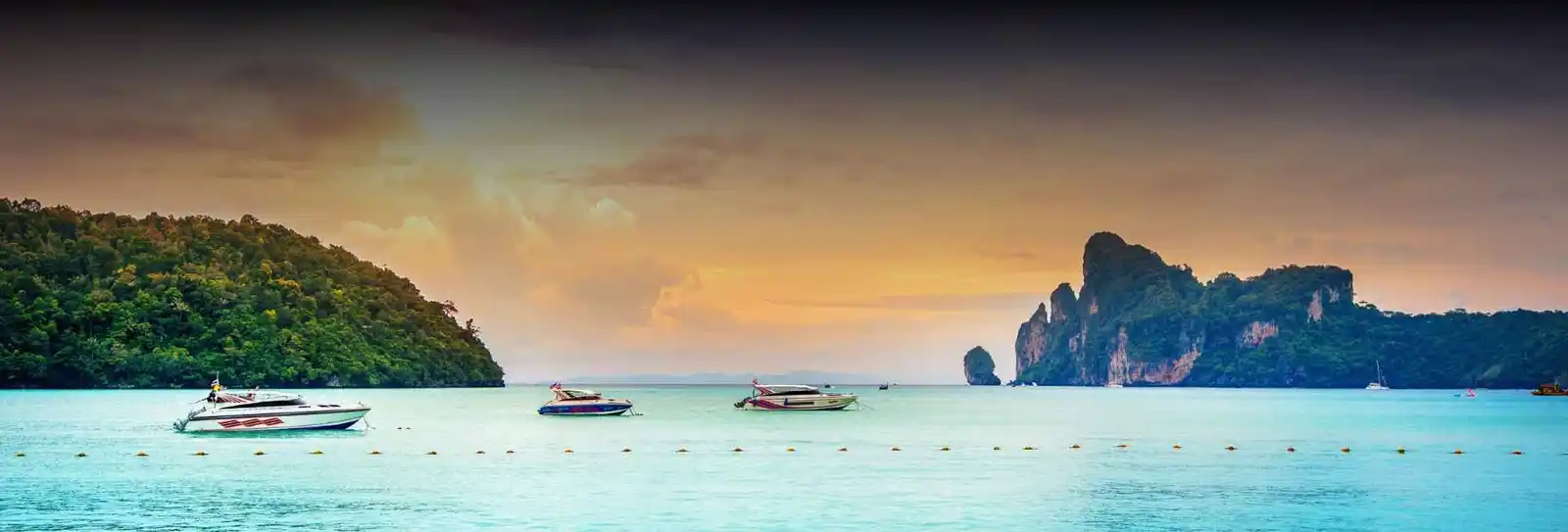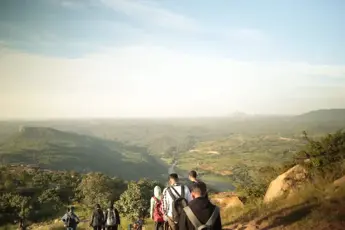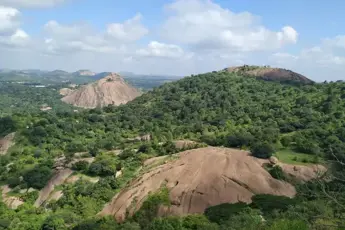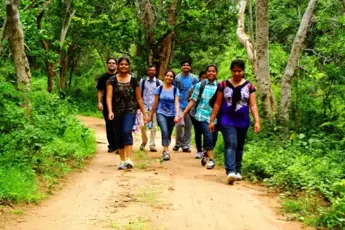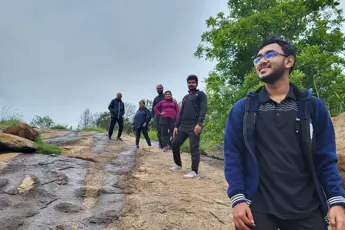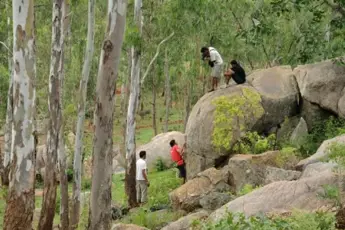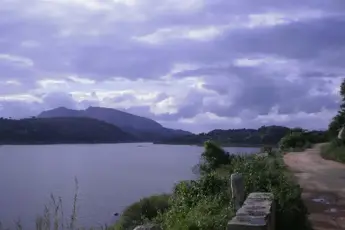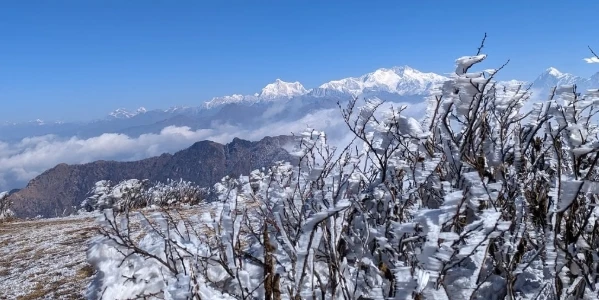
1. Sandakphu TrekSitting at an altitude of 11,930 feet, the Sandakphu Trek is the highest hike in West Bengal and is a part of the Singalila Ridge that borders Sikkim and Nepal. The world's only trek that takes in four of the five highest peaks, including Everest, Kanchenjunga and Lhotse range as well as Makalu range, is available to participate. The path goes through the Singalila National Park, a biodiverse nature reserve, charming local villages, and amazing ridge-line treks overlooking the Eastern Himalayas.History of Sandakphu TrekThe Sandakphu area is a significant natural and cultural centre. The ancient trade and travel routes that connect Nepal, Sikkim, West Bengal, and other regions were established through the use of these mountain passes. Sandakphu, the name of which is derived from "Height of the Poison Plant", because of its abundance of aconite, an extremely poisonous herb. This place has many species of this plant.". Botanists and naturalists, who were drawn to the area's rare Himalayan flora, started visiting during the British colonial period. The trail eventually became a favourite among both explorers and trekkers. The villages along the route are infused with Nepali and Tibetan culture, while still embodying traditional customs and hospitality from the mountains.Nearby Places of the Sandakphu TrekSingalila National Park: Singalila National Park is a sanctuary for the endangered red panda, Himalayan black bear, and 120 species of birds.Tumling: A Small village offering views of Kanchenjunga from early dawn and spread halfway in Nepal.Phalut: Situated at a distance of 21 km from Sandakphu, it is revered for the tranquillity of its landscapes and the panoramic 360° mountain views.Gorkhey & Srikhola: Great places to unwind while strolling down or just resting after an exhausting trek; greenery, wooden bridges, and riverside ambience.Darjeeling: An ideal place to either acclimate or profit from relaxation after the trek. Known for its tea gardens, the Himalayan Toy Train, and British colonial charm.Best Time to Visit Sandakphu TrekSpring (April to early June): For nature enthusiasts. The trail is decorated with rhododendron, magnolia, orchids, and lush greenery. Wildlife tends to be more active in these months.Autumn (October to early December): Mountain views are clear, crisp, and far-reaching. The sky usually holds no clouds and bestows a few grand views of the Himalayan range.Avoiding monsoon (July–September): The heavy rainfall will bring landslides; trails will be slippery and dangerous to trek.How to Reach SandakphuBy Airport: The nearest airport is Bagdogra Airport (IXB). From there, one must take a Private Vehicle or Taxi to Manebhanjan, which is an approximate four to five-hour journey.By Train: The nearest station is New Jalpaiguri (NJP). Shared taxis or private vehicles are available to reach Manebhanjan.By Road: From Darjeeling or Siliguri, one can take a jeep or a cab to Manebhanjan, the starting point of the trek.2. Goechala TrekIn Sikkim, you can find one of the most stunning and challenging high-altitude treks in India, including the Goechala Trek. You come close to the formidable Mt. Over 14 of the world's tallest mountains can be seen from Kanchenjunga, the third-highest peak. It is famous for its impressive landscapes, including dense rhododendron forests, alpine meadows and flowing rivers, as well as glacial valleys. Goechala Viewpoint marks the highest point of the trek, reaching a height of 15,100 feet. Besides the beauty of its natural surroundings, the route also provides an opportunity to explore Sikkimese culture and Buddhist traditions in terms of both visual art and spiritual practice.History of Goechala TrekThe Goechala area is a significant hub for Sikkim's cultural and spiritual heritage. "Goechala," a pa mereath named after the local language, has its roots in the "Ghecha Pass," which has been occupied by indigenous sheep and shepherds for centuries. It later became an important starting point for climbers embarking on Mt. Kanchenjunga. Sikkim's people consider Goechala to be a spiritual shrine and not just merely imposing mountain; it is revered as a godly protector. Eventually, the trail became one of India's premier trekking trails, offering both adventure and cultural immersion. Many hikers have reported feeling an intense inner peace along the way, especially near places like Samiti Lake and Thansing.Nearby Places of the Goechala TrekYuksom: Known as the first capital of Sikkim and a spiritual town with ancient monasteries.Dzongri Top: Sunrise views over Kanchenjunga, Pandim, Rathong, and Kabru peaks come from here.Samiti Lake: High up in elevation and crystal clear with very sacred locals and snapshots-worthy.Kanchenjunga National Park: UNESCO World Heritage Site, rich in biodiversity and cultural heritage.Pemayangtse Monastery: One of the oldest and most important monasteries of Sikkim, just about an hour away from Pelling.Best Time To Visit Goechala TrekSpring (April to early June): would go well for hardcore trekkers who love colourful nature. The whole route gets filled with rhododendrons, primulas, orchids, and the skies are mostly clear.Autumn (late September to early November): Best time, provides good-looking mountain views, crisp weather, and this is term of the most widely Designated Trekking time for gorgeous early morning views on Kanchenjunga.Avoid Monsoon (June to mid-September): Heavy rainfall comes to makes easy trails slippery and prone to landslides.Avoid Winter (December to February): Most parts of the route become tough to reach under harsh weather and heavy snowfall.How To Reach GoechalaBy Airport: In West Bengal, Bagdogra Airport (IXB) is the closest airport that can be reached by air. You can catch a taxi from here to Yuksom, the starting point of the trek. 6–7 hours by road. NJP is the closest major railway station.By Train: 96 stations. You can take either shared cabs or a private taxi from NJP to Yuksom.By Road: The city of Yuksom is easily accessible from Gangtok to Siliguri and Darjeeling. Despite the hilly terrain, it is important to exercise caution when travelling.3. Barsey Rhododendron Sanctuary TrekAlthough relatively brief, the Barsey Rhododendron Sanctuary Trek in West Sikkim is a sight to behold, as it not only unveils abundant forested land but also offers some truly spectacular scenery. Within the Singalila Range, the sanctuary spans an area of 104 sq km.? For those who are new to trekking and want to experience the thrill of climbing in the Himalayas without being trapped at great heights, this is the perfect opportunity. It's an excellent choice. The sanctuary is home to a diverse collection of over 200 species, including red pandas and Himalayan black bears. The Kanchenjunga range is the most stunning.History of Barsey RhododendronThe Barsey Rhododendron Sanctuary was established by the Government of Sikkim in 1996 to safeguard a range of plants and animals in the Singalila. It has been inhabited for millennia and is both a natural habitat and thriving. The area. However, it eventually gained popularity for its natural beauty and significance as an eco-tourism destination. The Eastern Himalayan ecosystem, including the rhododendron forests at the sanctuary, has been studied by botanists and nature enthusiasts.Nearby Places of the Barsey RhododendronOkhrey Village: A beautiful hamlet offering homestays and local cuisine is a great cultural stop before and after the trek.Rinchenpong & Kaluk: Small villages is known for panoramic Himalayan views, monasteries, and peaceful retreats.Pelling: Located a few hours away, it's famous for Kanchenjunga views, Pemayangtse Monastery, and Rabdentse ruins.Jorethang: A commercial town that acts as a gateway to many West Sikkim treks and routes.Best Time to Visit Barsey Rhododendron Sanctuary TrekSpring (mid-March to late April): This is the optimum season to see the sanctuary, which transforms into a riot of hues with flowering rhododendrons in crimson, pink, white, and purple.October-Novembere: Autumn is a tranquil season for birdwatching and photography since the clear skies and Himalayan panoramic views are stunning. Monsoon should be avoided as trails get slick and leech-infested because of torrential rain.December to January: known as Peak Winter, has chilly temperatures and sporadic snowfall that could close some trails.How to Reach BarseyBy Airport: West Bengal's Bagdogra Airport (IXB) is the closest one. Drive from here to Hilley, the beginning of the hike (about 6–7 hours).By Railway Station: The nearest railway station is New Jalpaiguri (NJP). From NJP, you can hire a cab to travel through Jorethang and Sombaria to Hilley.By Road: Road access to Hilley is from Gangtok, Pelling, and Darjeeling. Though the roads may be difficult, public jeeps and private taxis are offered.4. Chopta–Tungnath–Chandrashila TrekThe Chopta–Tungnath–Chandrashila Trek stands as a renowned and breathtaking brief hiking journey in Uttarakhand. The journey to Chandrashila peak begins in Chopta village, India's 'Mini Switzerland,' and ascends through dense forests and rolling meadows past ancient temples to its 4,000-meter summit. The world's tallest Shiva temple, Tungnath, stands as a point of passage for trekkers. The trek presents breathtaking views of the Garhwal Himalayas, including Nanda Devi and Trishul, along with Chaukhamba and Kedar Dome, which makes it suitable for novices and family groups.History of ChoptaTungnath and Chandrashila stand as intricate religious and mythological sites. The Pandavas constructed Tungnath Temple during their journey to seek penance following the Kurukshetra war, according to legend. The Panch Kedar represents a network of five Lord Shiva temples forming an intricate sacred complex. The legend states that Lord Rama meditated at this location following his victory over Ravana, which resulted in the emergence of Chandrashila peak, known as "Moon Rock".Nearby Places of ChoptaDeoria Ta: A scenic high-altitude lake 20 km fromChoptat Ideal for camping and birdwatching.Ukhimath: A city where the deity of Kedarnath is worshipped during downtime.Kalimath Temple: An ancient temple devoted to Goddess Kali is located here.Rudraprayag: A sacred convergence of Alaknanda and Mandakini gorges, on the way to Chopta.Best Time to Visit ChoptaSpring( March to May): Pleasant rainfall with rhododendron blooms and clear views. Ideal for touring and photography.Afterlife( September to November): Crystal-clear mountain views,post-monsoon newness, and smaller crowds.Winter( December to February): Snow-covered trails and the possibility of snow touring to Tungnath. Chandrashila may be inapproachable during heavy snowfall. • Avoid Monsoon( June to August). The region gets slippery, cloudy, and prone to landslides during thunderstorms.How to Reach ChoptaBy Airport: The nearest field is Dehradun Airport( Dehradun), around 220 km from Chopta.By Train: The nearest road station is Haridwar( 225 km). From there, hacks and motorcars are available to reach Chopta via Rudraprayag and Ukhimath.By Road: Chopta is well-connected by road from Rishikesh, Haridwar, and Dehradun. It’s accessible by participated jeeps, motorcars, or private vehicles.5. Phulara Ridge TrekGovind Pashu Vihar National Park in Uttarakhand has a lesser-known trail, the Phulara Ridge Trek, which is famed for its exceptional crest-walking experience. This mild passage takes you up to about 3,700 metres( 12,100 feet) above sea level with wide panoramic views of snow-limited peaks similar to Swargarohini, Kala Nag, Bandarpoonch and Ranglana. The unique aspect of this journey is the laborious crest walk, which involves walking across a mountain range for hours, enclosed by deep denes For pedestrians seeking solitariness and scenic beauty, this trail is a must- see due to its vast breadth of meadows, thick evergreen timbers, rare Himalayan species, and stunning alpine foliage.History of Phulara RidgeThe area girding Phulara Ridge is rich in both natural and artistic treasures. In history, this region was a vital link in the ancient trade and passage paths that were followed by goatherds and original occupants who travelled between seasonal ranges. The Govind Pashu Vihar Sanctuary, which was established in 1955, is responsible for securing endangered species such as the snow leopard and the musk deer during the journey. Phulara Ridge, unlike numerous other journeys in Uttarakhand, isn't directly connected to any mythological stories, but rather highlights the peaceful period of Himalayan customs and conservation sweats. The journey has gained popularity in recent times due to its peaceful and eco-friendly nature, setting it apart from the further sightseer- acquainted routes.Nearby Places of Phulara Ridge TrekHar Ki Dun Valley: A popular journey from Sankri, known for its lush beauty and artist towns.Ruinsara Tal: A pristine glacial lake nestled in high-altitude meadows.Osla Village: A traditional Himalayan village en route to Har Ki Dun, known for its rustic architecture.Best Time to Visit Phulara Ridge TrekSummer( May to June): Pleasant rainfall, clear skies, and blooming wildflowers make this an ideal time for touring and photography. • Afterlife( September to November) Post-monsoon clarity, golden meadows, and crisp mountains give the stylish Himalayan views.Avoid Monsoon( July to August): Trails come slippery due to heavy rain, and the region is prone to landslides and bloodsucker infestations.Winter( December to April): The trail is substantially impassable due to snow. Avoid unless endured and well-equipped for snow trekking.How to Reach the Base Camp( Sankri)By Airport: The nearest field is the gleeful Grant Airport, Dehradun. From there, drive to Sankri( approx. 200 km, 8 – 10 hours).By Train: Dehradun Railway Station is the nearest railhead. Taxis or motorcars to Sankri are available from there.By Road: Sankri is well-connected to Dehradun via Mussoorie, Purola, and Mori. Shared jeeps and private hacks operate regularly.6. Singalila Ridge TrekThe Singalila Ridge Trek is a spectacular high-altitude trail that runs along the Indo-Nepal border, passing through the Singalila National Park. The journey offers panoramic views of the four loftiest peaks in the world, Everest, Kanchenjunga, Lhotse, and Makalu, from colourful edge points, especially from Sandakphu and Phalut. This journey is rich in biodiversity, covering rhododendron timbers, alpine meadows, and fascinating mountain townlets. It's also one of the many journeys in India that provides a cast of both Indian and Nepalese geographies at formerly.History of the Singalila RidgeThe Singalila Ridge holds literal and strategic significance due to its position along the ancient Indo-Nepal trade and trip routes. The area was formerly used by dealers and Buddhist pilgrims travelling between India, Nepal, and Tibet. During British rule, Sandakphu became a popular hill station for European botanists and explorers, especially those interested in Himalayan foliage. The region’s rich heritage is also marked by its inclusion in the Darjeeling Himalayan Railway heritage area, reflecting its social charm. Over time, the trail evolved into a premier touring route, especially for those seeking unmatched views of the eastern Himalayas and the majestic Kanchenjunga range.Nearby Places of the Singalila RidgeSandakphu standpoint: The loftiest point in West Bengal, known for views of the Sleeping Buddha conformation of peaks.Phalut: Phalut is Remote and serene, offering a deeper Himalayan experience and a peaceful atmosphere.Tumling: Tumling is a picturesque Nepalese village that provides panoramic daylight and evening views.Darjeeling: Darjeeling is a scenic hill city known for its tea plantations, toy train, and artistic blend.Best Time to Visit the Singalila Ridge TrekSpring( March to May): The timbers burst into bloom with various rhododendrons and magnolias, making the journey visually stunning and ambrosial.Afterlife( October to December): The skies are crystal clear, offering stunning views of Kanchenjunga and other Himalayan peaks.Avoid Monsoon( June to September): Heavy downpours make trails slippery and may lead to mudslides and landslides.Winter( Late December to February): Snow robes the crest, and although views are spectacular, rainfall conditions can be harsh and require redundant medication. How to Reach the Base( Manebhanjan)How to Reach Singalila Ridge TrekBy Airport: The nearest field is Bagdogra Airport( Siliguri) – around 85 km from Manebhanjan.By Train: New Jalpaiguri( NJP) is the closest major road station, well-connected to metropolises like Kolkata and Delhi.By Road: From Bagdogra or NJP, take a hack or a private jeep to Darjeeling, and also onward to Manebhanjan, the journey starting point( approx. 26 km from Darjeeling).7. Dzongri TrekThe Dzongri Trek is one of the most scenic and popular short journeys in West Sikkim, ideal for those seeking a Himalayan experience without committing to a lon passage. Starting from Yuksom, this journey leads you deep into the Kanchenjunga National Park, offering stunning views of snow- limited peaks like Kanchenjunga, Pandim, and Kabru. Pedestrians walk through lush timbers of rhododendron, oak, and magnolia, crossing gushing aqueducts and high-altitude meadows. The highlight is Dzongri Top( 4,200 m), where the day light view over the Himalayan range is indelible.History of Dzongri TrekThe Dzongri Trek is part of the ancient trail that leads to the Goechala Pass, used historically by locals and yak herdsmen for grazing and trade. The area holds spiritual significance for the indigenous Lepcha people and is deeply connected to the sacred Kanchenjunga massif, which i deified in Sikkimese Buddhist culture. Over time, the trail evolved into a notorious touring route, especially after the establishment of Kanchenjunga National Park in 1977, a UNESCO World Heritage Site. The defended status of the region h saved its pristine ecology and artistic heritage, making it a favorite among serious pedestrians and suckers.Nearby Places of Dzongri TrekYuksom Monastery & Coronation: The Throne literal and artistic milestone in the base village.Kanchenjunga National Park: UNESCO heritage demesne rich in biodiversity and sacred peaks.Tshoka Village: A quaint Tibetan-style agreement girdled by rhododendron timbers.Dzongri Top: The stylish standpoint for Kanchenjunga, Pandim, and other high peaks.Samiti Lake( if extending to Goechala): A serene glacial lake girdled by towering peaks.Best Time to Visit Dzongri TrekSpring( April to beforehand June) This is the stylish time to see blooming rhododendrons and clear skies with affable rainfall.Afterlife(Mid-September to November): offers crisp air and continued mountain views, ideal for photography and long-distance visibility.Winter( December to March): Snow-covered trails offer a magical geography, but conditions become more gruelling and cold.Avoid Monsoon( July to beforehand September): Heavy rains can bring about landslides and slippery trails, making touring perilous.How to Reach Yuksom( Base Village)By Airport: The nearest field is Bagdogra Airport( West Bengal). From there, drive to Yuksom( approx. 7 – 8 hours).By Train: New Jalpaiguri( NJP) is the nearest major railway station. Taxis or participate taxicabs are available to Yuksom.By Road: From Siliguri, Gangtok, or Pelling, hacks and participated jeeps are available to reach Yuksom, the trailhead.8. Khopra Ridge TrekThe Khopra Ridge Trek is a retired gem in the Annapurna region of Nepal, offering panoramic Himalayan views with smaller crowds compared to further marketable trails like Annapurna Base Camp or Ghorepani – Poon Hill. Located near the Indian border( close to Bihar and Uttar Pradesh), this journey is ideal for those seeking solitariness, nature, and a close connection with traditional Nepali mountain culture. It takes you through fascinating townlets, thick rhododendron timbers, and eventually to the stunning Khopra Danda crest, from where you can witness dramatic views of Dhaulagiri, Annapurna South, Nilgiri, and Machapuchare.History of Khopra Ridge TrekThe Khopra Ridge area, though not as historically prominent as ancient trade routes or passage paths, has deep roots in the original Gurung and Magar communities who have lived in these hills for centuries. The region was fairly unknown to the touring world until recent times when original tourism cooperatives developed the trail as a community- grounded tourism model to promote sustainable livelihoods. moment, Khopra Ridge is n't only a trekking destination but also a fine illustration of eco-tourism and artistic absorption, conserving the pristine beauty of the Himalayas and empowering pastoral townlets along the route.Nearby Places of Khopra RidgeKaire Lake: A beautiful glacial lake at high altitude, considered sacred by locals.Poon Hill standpoint: Poon Hill standpoint Can be included in return leg for daylight over the Himalayas.Ghandruk Village: A scenic Gurung village known for its heritage and views of Annapurna South.Dhaulagiri: Icefall Views continued lookouts of the world's seventh-highest mountain from Khopra Danda.Best Time to Visit Khopra RidgeSpring( March to May): A great time with blooming rhododendrons and clear mountain views. Temperatures are mild and affable.Afterlife( September to November): The most popular season with crisp air and excellent visibility. Post-monsoon greenery enhances the geography.Winter( December to February): offers a snowy experience and peaceful trails, but be prepared for cold rainfall, especially at Khopra Danda.Avoid Monsoon( June to August): Trails come muddy and slippery due to heavy downpour, and mudslides are common.How to Reach the Base( Nayapul/ Ghandruk)By Airport: Fly to Pokhara from Kathmandu( 25 – 30 minutes). From Pokhara, drive to Nayapul or Ghandruk to start the journey.By Road: motorcars and hacks from Pokhara connect to colourful trail heads, such as Nayapul and Ghandruk.Why Book with escape2exploreWhen exploring Himalayan Treks from Bengaluru and beyond, escape2explore stands out as a trusted name in adventure and experiential travel. Here’s why hundreds of travellers choose us for their getaways:Trusted, Well-Reviewed Local Operator: escape2explore has gained the trust of thousands of content tourists all over India. With persistent positive feedback and an unblemished reputation for delivering quality experiences, we assure you that your experience will be hassle-free, memorable, and value-packed. Our insider local knowledge guarantees that you will always be in safe hands.Seasoned Guides: Our trips are led by friendly, trained, and professional guides who are passionate about the outdoors and your safety. Whether it's a beach trek, a cultural tour, or a spiritual walk through temples, our team knows the terrain, the stories, and how to make each moment count.Safe & Curated Itineraries: Your safety is our number one priority. Our tour packages are thoughtfully crafted with safety measures, researched accommodations, and easy travel arrangements. We take care of the details so you can have the experience hassle-free and worry-free.Unique Experience That You Won't Find Anywhere Else: With escape2explore, you discover more than the tourist attractions. We go off the beaten track with hidden beaches, unusual treks, offbeat cultural destinations, and true interactions.Read: Solo Trekking in India |Kedarkanth vs Brahmatal |5 Underrated Treks|Top 7 Treks|Instagrammble Treks in India


